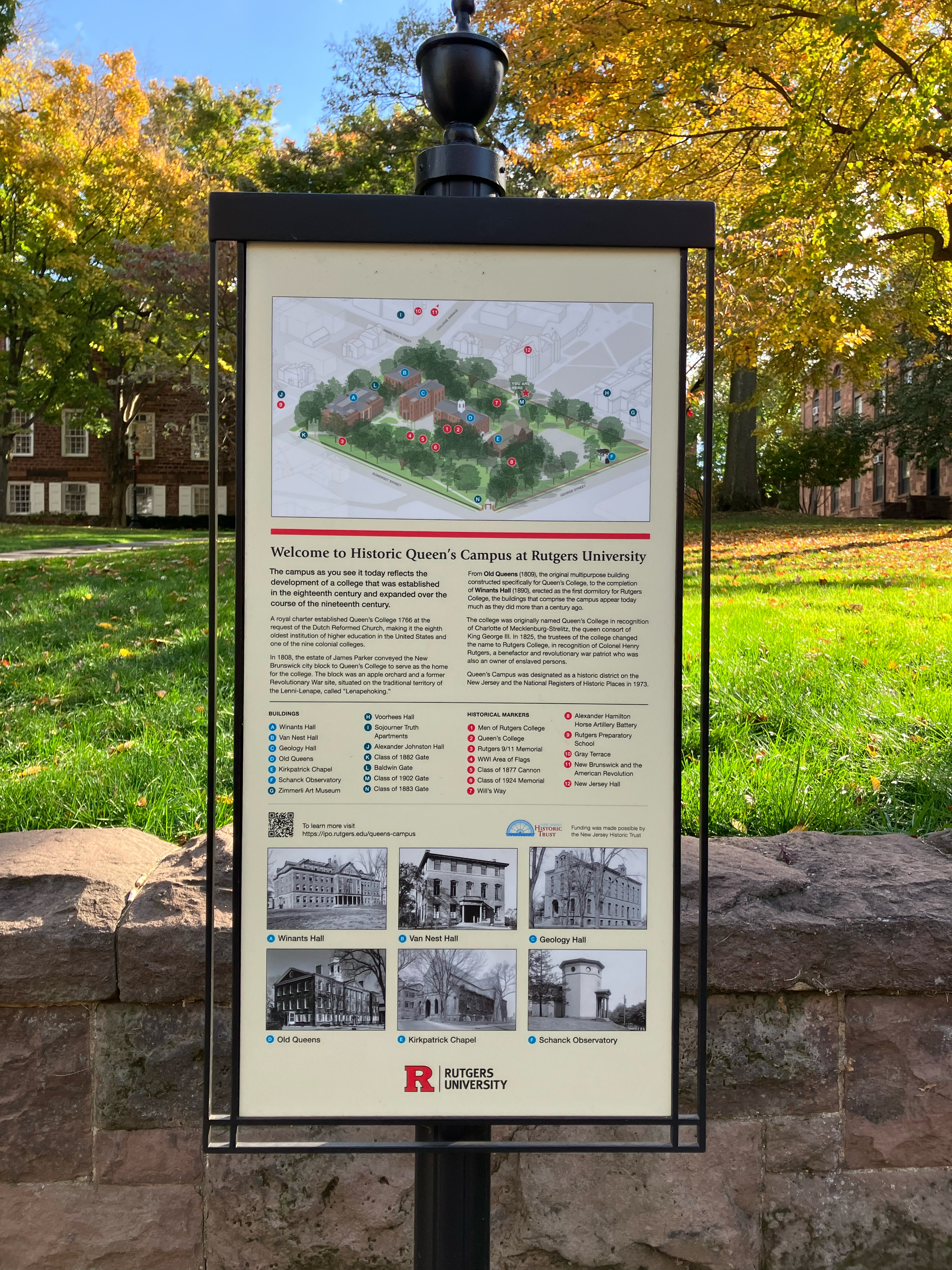
A walk through the Old Queens Campus, among its iconic first buildings, provides a glimpse into the past of Rutgers. It is not hard to imagine students rushing to class, debating the topics of the day, and gathering on the lawn for commencements. Old Queens is the historic heart of Rutgers University. Rutgers was originally established as Queens College in 1766, one of just nine colonial colleges, and today is the eighth oldest institution of higher education in the United States.
Tucked away on the northwest side of the Old Queens Campus and slightly obscured by Winants Hall and Geology Hall, is Van Nest Hall. When constructed in 1847, its Greek revival style and classic widow’s walk perched above the main entrance were easily located on Old Queens. Over the years as other structures were erected on Old Queens, and then on the streets around Old Queens, Van Nest Hall, which today houses Alumni Relations, became slightly more concealed to the point where even some alumni were having trouble finding the building.
In 2018, a request was made by Alumni Relations for wayfinding to direct visitors to Van Nest Hall.
While the Old Queens Campus had a few historical markers, it lacked a comprehensive wayfinding and signage system. When IP&O’s Planning, Development, and Design (PD+D) group received the request from Alumni Relations, they sought grant funding for the project. Given the historical relevance of the campus, the Architecture and Design unit researched a New Jersey Historic Trust grant. “We identified the New Jersey Historic Trust grants as a viable means of funding,” explained Susan Ryan, PD+D’s Project Architect and Historic Architect. “Once we identified the grant, it made sense to expand the project to encompass the entire Queens Campus.”
PD+D started working on the grant in May 2020 and was awarded $22,275 in November that same year.
“This has been a truly collaborative effort among groups of IP&O, within PD+D, and our partners around the university,” said Dave Schulz, Vice President/University Architect. “Old Queens is an historic monument not only to the architecture of the 19th century, but this was the birthplace of what would become today’s Rutgers University. The signage helps tell that story.”
PD+D’s Office of Architecture and Design, University Planner, University Landscape Architect, and its GIS mapping office were all collaborators on the project. Other collaborators included IP&O’s Communications and Marketing group, Parking and Transportation Services, University Public Safety, Business Services’ Signage Graphics and Dosing unit, Facilities Maintenance and Grounds, Rutgers Department of Art History, Disability Services, and Special Collections and University Archives. Jordan Lucas, PD+D’s 2023 summer intern, also collaborated on the project.
Michael Randall, PD+D’s Senior Project Coordinator and Environmental Graphic Designer was charged with designing draft signage proposals for the grant application. His designs would become the baseline for the final design.
“There was a lot of content about each of these buildings,” Randall explained. “The challenge became what to include on the signage without using an overwhelming amount of copy. The idea of an accompanying website came into play, and working with IP&O’s Communications and Marketing Team, we also determined that a QR code on the signs could link to the website where more detailed information would live,” said Randall. “As a result, all of the signs have images of the historic buildings, a baseline narrative, and a QR code.”
The sign designs and posts have a 19th and early 20th century feel to compliment the surrounding architecture. “We also looked at peer institutions for signage aesthetics,” Ryan said.
The signs were installed on January 29. The largest sign is in Lot 1 by Kirkpatrick Chapel. It includes a map and legend and building photos.
The website went live on February 1. The website includes all information found on interpretive signage, expanded narratives for campus buildings, a selection of historic photographs, expanded narratives for historic gates, transcribed historical and/or dedication markers and plaques, additional information and links for select buildings and markers, and drone flyover footage of the Old Queens Campus.
“Eventually we want to implement interactive maps,” said Randall. “We are hoping to include more information about the historic photos and site conservation information.” He added that plans are being looked at to provide similar wayfinding signs on other Rutgers Historic Districts in Newark and Camden.
“A small project with a significant impact on the history of the Queens campus provides markers for years to come that can be used by visitors and students alike,” said Laura Berman, PD+D’s Assistant Vice President of Architecture and Design. “All those involved, especially Susan and Mike, put a lot of time, research, and effort into this project. With the successful efforts of so many, the Queens Campus feels more complete.”

